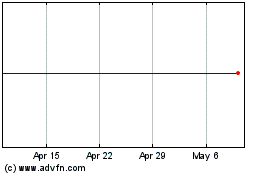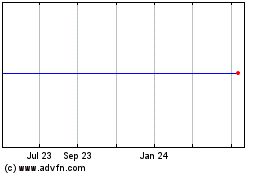HP Enterprise Explores 'Persistent Memory' for Chips
March 29 2016 - 10:20PM
Dow Jones News
Hewlett Packard Enterprise Co., hoping to distinguish itself
amid a mob of cookie-cutter computer makers, is betting on a new
approach to memory that it says can bring dramatic speed
improvements to companies wrestling with growing troves of
data.
The trick is to combine two existing kinds of memory chips in an
arrangement known as persistent memory. The Palo Alto, Calif.,
company isn't the only one exploring the combination, but it
predicted that its technical contributions and large market share
in servers, where it believes persistent memory will have a
positive impact, can translate into an early lead.
"We worked for a long time behind the covers," said Tim Peters,
vice president and general manager of the company's server group.
"This is accelerating really quickly."
HP Enterprise, which was No. 1 in server sales with 25% of
server revenue in the fourth quarter, according to Gartner Inc.,
discussed the persistent memory effort and other elements of its
strategy in a briefing Tuesday.
Other computer makers that have announced plans to use forms of
persistent memory include Oracle Corp. and Super Micro Computer
Inc. Component makers working in the field include Micron
Technology Inc., SanDisk Corp., Netlist Inc. and the Viking
Technology unit of Sanmina Corp.
Computer makers for decades have relied on chips called dynamic
random-access memory, or DRAM, to act like a scratch pad to hold
data temporarily that programs use frequently. The technology is
very fast, but it is costly and has the disadvantage that
information is lost when a system is switched off.
Flash memory is a newer alternative that was first popularized
in mobile devices but is quickly arriving in corporate data
centers. Flash retains data after the power is switched off, and it
is much faster than disk drives but considerably slower than DRAMs.
It is used most often in the form of solid-state drives, often
installed in servers in slots previously reserved for the
disk-based equivalents.
Persistent memory involves placing both kinds of chips on the
cards—dubbed DIMMs, for direct in-line memory module—that typically
are used to plug DRAMs into servers. The connection used by those
cards is much faster than that used for solid-state drives.
The new NVDIMM cards, as they are called, come with batteries
that help retain data if power is turned off. When that happens,
the information is transferred from the DRAMs to the flash
chips.
In one measure of speed, called latency, NVDIMMs operate 81
times faster than solid-state drives, Mr. Peters said. But actual
results for customers are expected to be much less dramatic without
other technology changes.
To take advantage of NVDIMM cards, some features of
servers—including basic startup commands stored in chips known as
firmware—have to be updated. Intel Corp. is also adding features to
processor chips to help support NVDIMM cards.
The greatest speed advantages, Mr. Peters and other industry
executives say, will come if operating systems and application
programs can be modified to take advantage of the new kind of
memory.
"It's going to take a while for software and for applications to
catch up to the hardware," said Ryan Baxter, a director of
marketing at Micron, which makes both kinds of memory chips and has
developed NVDIMMs.
But there are immediate benefits. Mr. Peters said that in some
tests, Microsoft Corp.'s SQL Server database program, running on an
NVDIMM-equipped server, carried out chores twice to four times as
fast as on a server with only flash hard drives.
HP Enterprise on Tuesday revealed plans to offer its first
NVDIMM system, an $899 product that comes with eight gigabytes of
flash and an equal amount of DRAM. The company plans to sell it
separately to customers, as well as introduce new servers that come
with the technology already installed.
Patrick Moorhead, an analyst with Moor Insights & Strategy,
predicted the technology would have the most impact on companies
that need extreme performance in handling data. By putting fast
memory and flash in the same slot, "you can address a lot more data
at the same time," he said.
Write to Don Clark at don.clark@wsj.com
(END) Dow Jones Newswires
March 29, 2016 22:05 ET (02:05 GMT)
Copyright (c) 2016 Dow Jones & Company, Inc.
Sandisk (NASDAQ:SNDK)
Historical Stock Chart
From Mar 2024 to Apr 2024

Sandisk (NASDAQ:SNDK)
Historical Stock Chart
From Apr 2023 to Apr 2024
